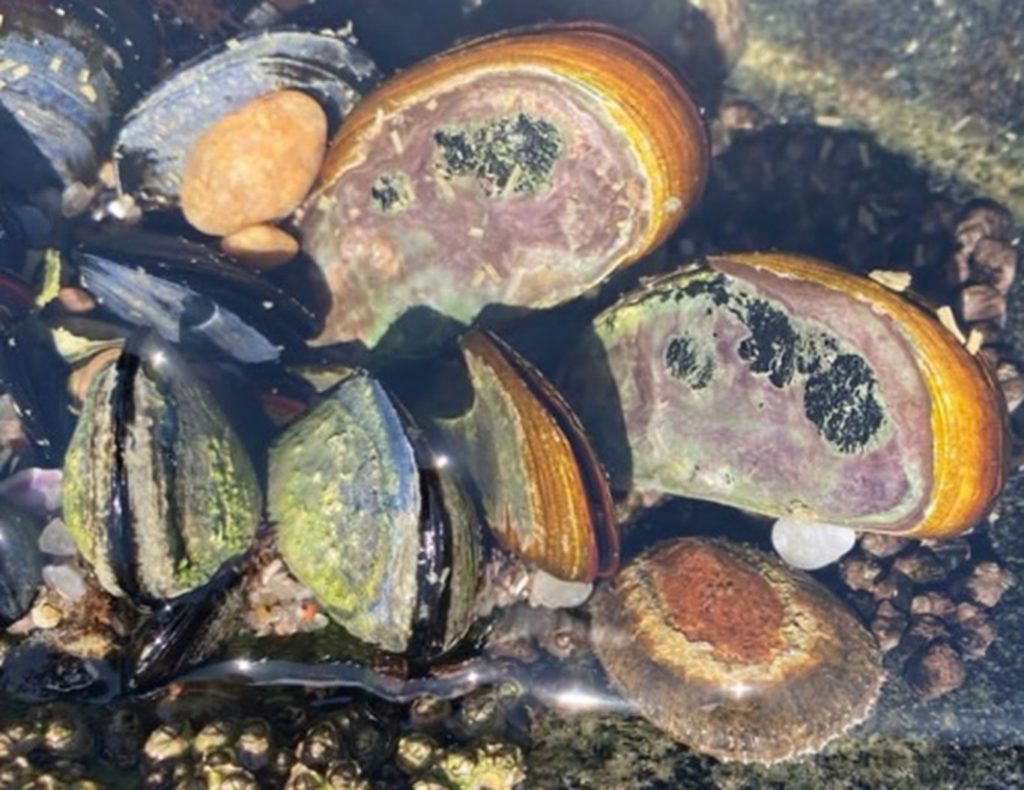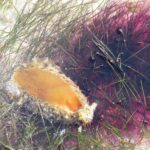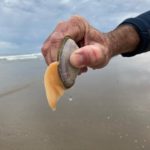Black mussels in Namibia include the following species: Ribbed mussel (Aulacomya atra), Black mussel (Choromytilus meridionalis), Mediterranean mussel (Mytilus galloprovincialis), Brown mussel (Perna perna) and Bisexual mussel (Semimytilus algosus). In one of my former articles on this website, I discussed also White mussels on the Namibian coastline.

Description
Black mussels are black or brown with a tinge of green or blue. They are enclosed by a pair of shell valves linked by an elastic ligament. The flesh of females is orange, and that of males is off-white. They are not very mobile and attach themselves with a ‘beard’ of byssal threads to sand, rock, or wood. They are filter feeders, sucking water in through an inhalant siphon, sieving it through sheet-like gills, and expelling wastewater via an exhalant siphon. Their sizes range, depending on the type of bivalve, between 40 – 150mm.
Uses of Black mussels
The flesh of all the bivalves mentioned above is edible. It can be eaten raw but is tastier once steamed. Black mussels are also used for bait to catch Cob or Galjoen along the Namibian coastline.
Nutritionally, bivalves are an excellent source of omega-3 fatty acids, iron, selenium, zinc, and vitamin B12, which can be seen in the article provided at this link.
Finding and harvesting Black mussels

Black mussels grow on rocks in the intertidal zone. They are commonly hand-picked at low tide. They are normally harvested at a size of 6cm or bigger, as this is a good size for consumption.
The mussel flesh is larger and more flavorsome during winter when the water temperature drops to between 12-15⁰C.
Mussels may only be picked by hand, and no mechanized implements or tools may be used, therefore it is quite labor-intensive. Legally 50 mussels may be harvested per person.
Note: Black mussels are poisonous during plankton blooms as these filter-feeders ingest the toxins of such occurrences. Plankton blooms can be recognized by the reddish-brown color of the water. After about 3 clear days after a plankton bloom, mussels can be safely eaten.
Lessons learned from Black mussels
- These mussels occur on rocks at the intertidal zone
- They are most flavorsome in wintertime in cold waters
- During plankton bloom, they are poisonous but can be safely eaten about 3 days after the bloom ends.
Reference
Branch G. M. et al (2016) Two Oceans: A guide to the marine life of Southern Africa 4th edn., Struik Nature.
Further readings about Bivalves on this website:
An oyster species growing on Mangrove trees
White mussels at the Namibian coastline
Beachcombing for Vongole clams in Northern Italy
Collecting Pipi clams at Rawai Beach
.




